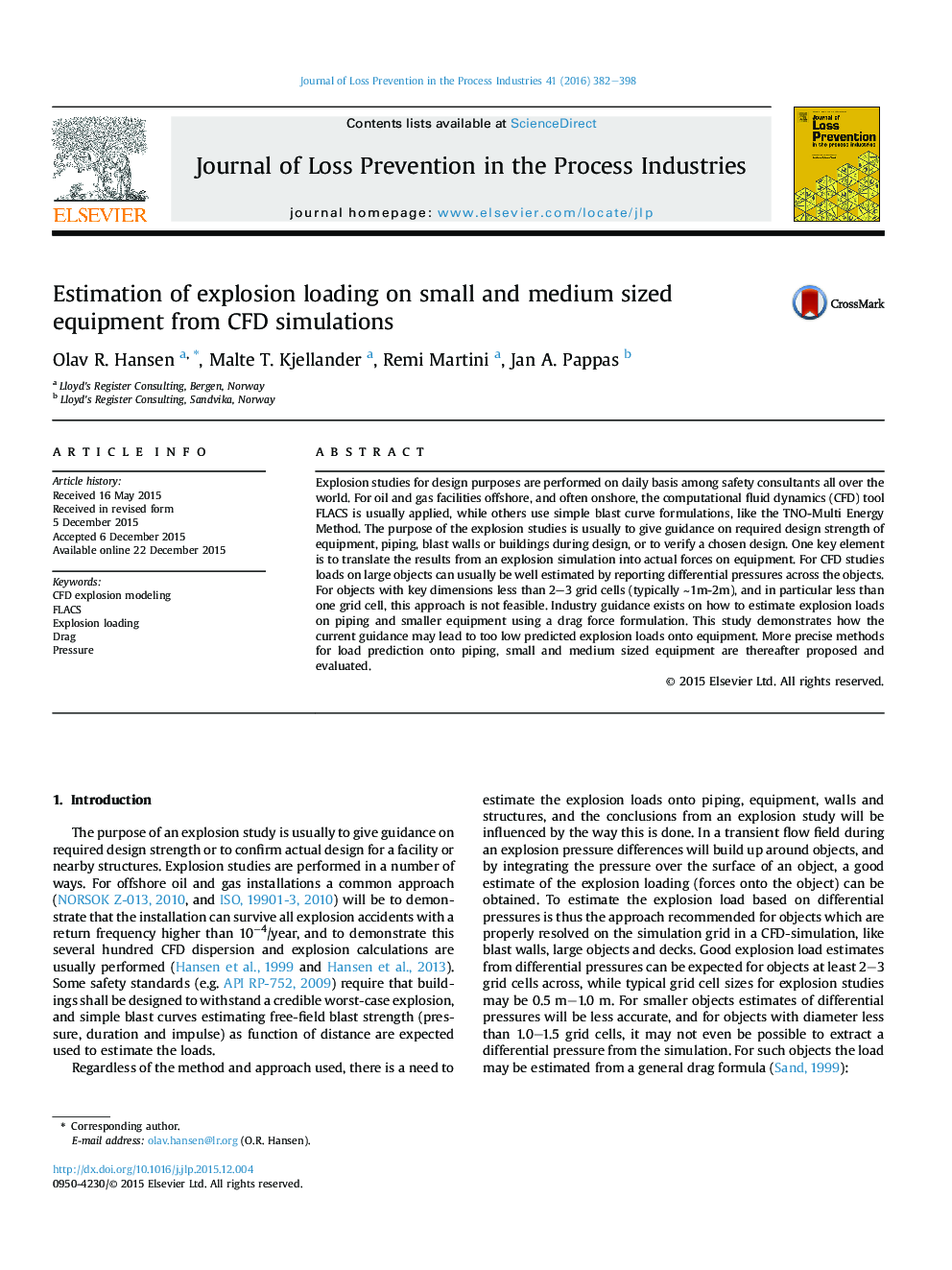| Article ID | Journal | Published Year | Pages | File Type |
|---|---|---|---|---|
| 586031 | Journal of Loss Prevention in the Process Industries | 2016 | 17 Pages |
•Evaluation of explosion load estimation methods from CFD for equipment.•Proposed method for improved load estimates based on drag and pressure gradient.•Better precision of explosion loads onto pipes and equipment in near and far field.
Explosion studies for design purposes are performed on daily basis among safety consultants all over the world. For oil and gas facilities offshore, and often onshore, the computational fluid dynamics (CFD) tool FLACS is usually applied, while others use simple blast curve formulations, like the TNO-Multi Energy Method. The purpose of the explosion studies is usually to give guidance on required design strength of equipment, piping, blast walls or buildings during design, or to verify a chosen design. One key element is to translate the results from an explosion simulation into actual forces on equipment. For CFD studies loads on large objects can usually be well estimated by reporting differential pressures across the objects. For objects with key dimensions less than 2–3 grid cells (typically ∼1m-2m), and in particular less than one grid cell, this approach is not feasible. Industry guidance exists on how to estimate explosion loads on piping and smaller equipment using a drag force formulation. This study demonstrates how the current guidance may lead to too low predicted explosion loads onto equipment. More precise methods for load prediction onto piping, small and medium sized equipment are thereafter proposed and evaluated.
